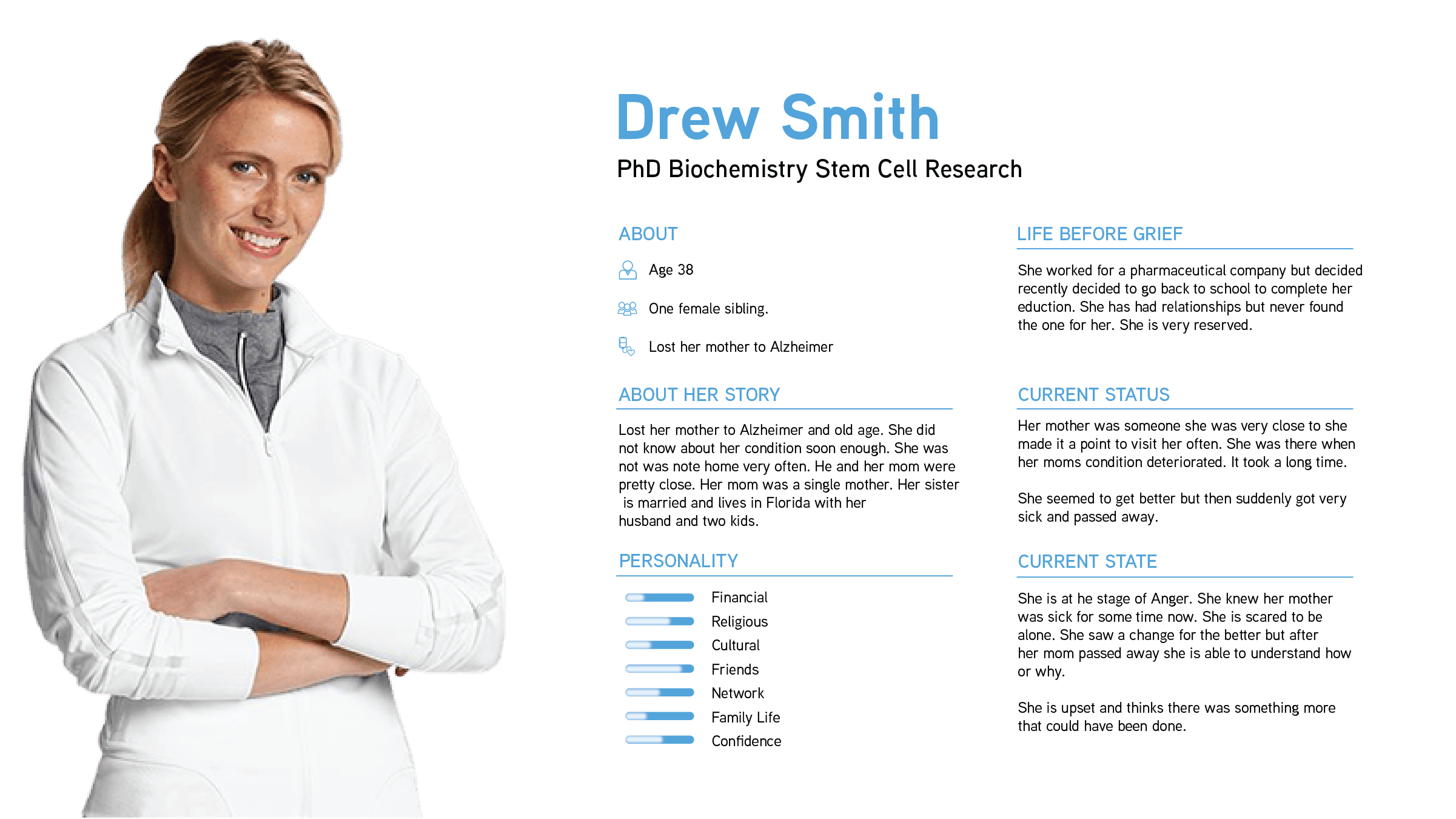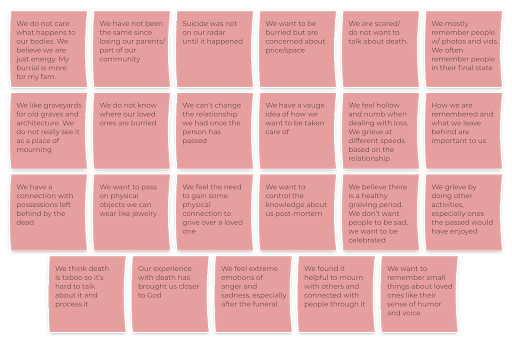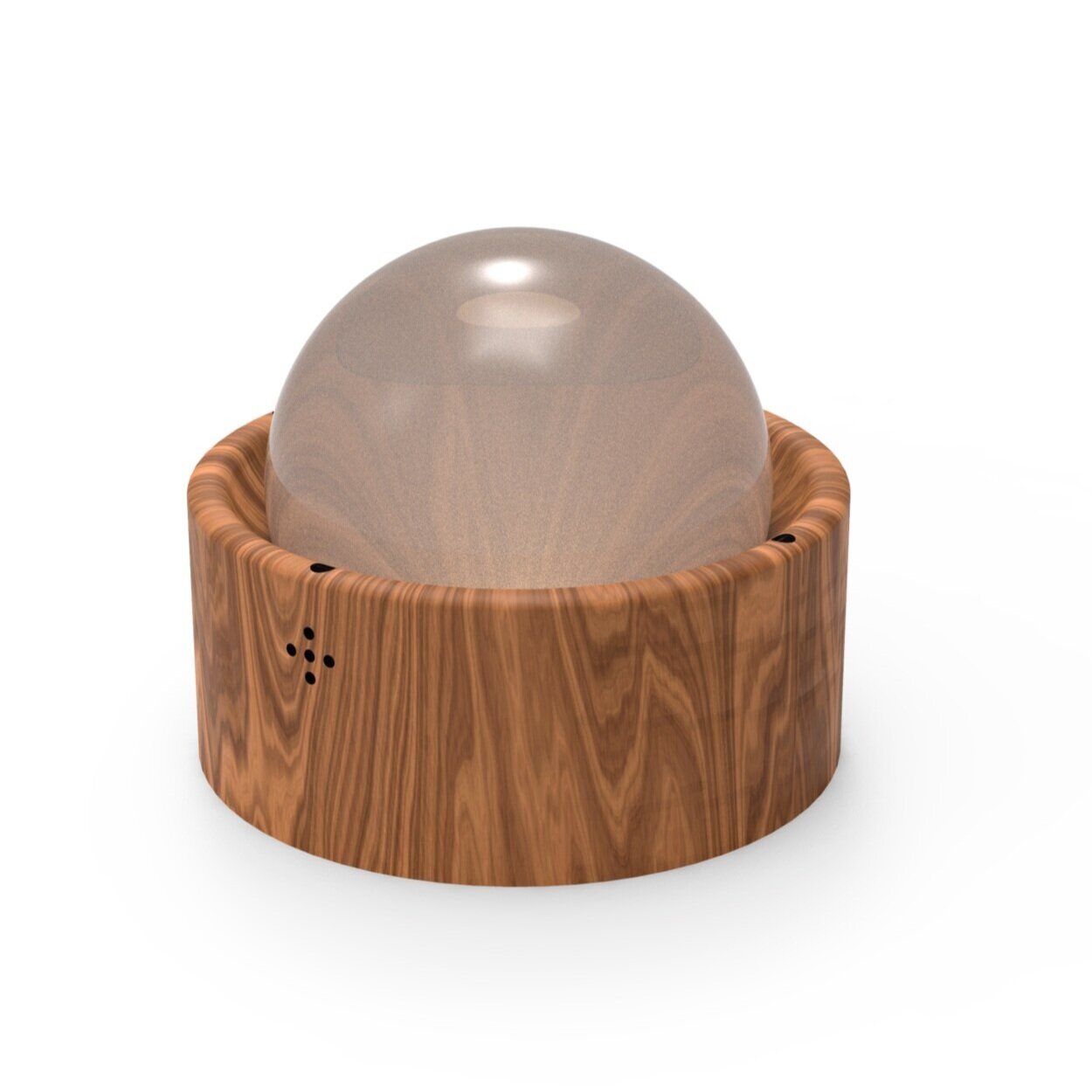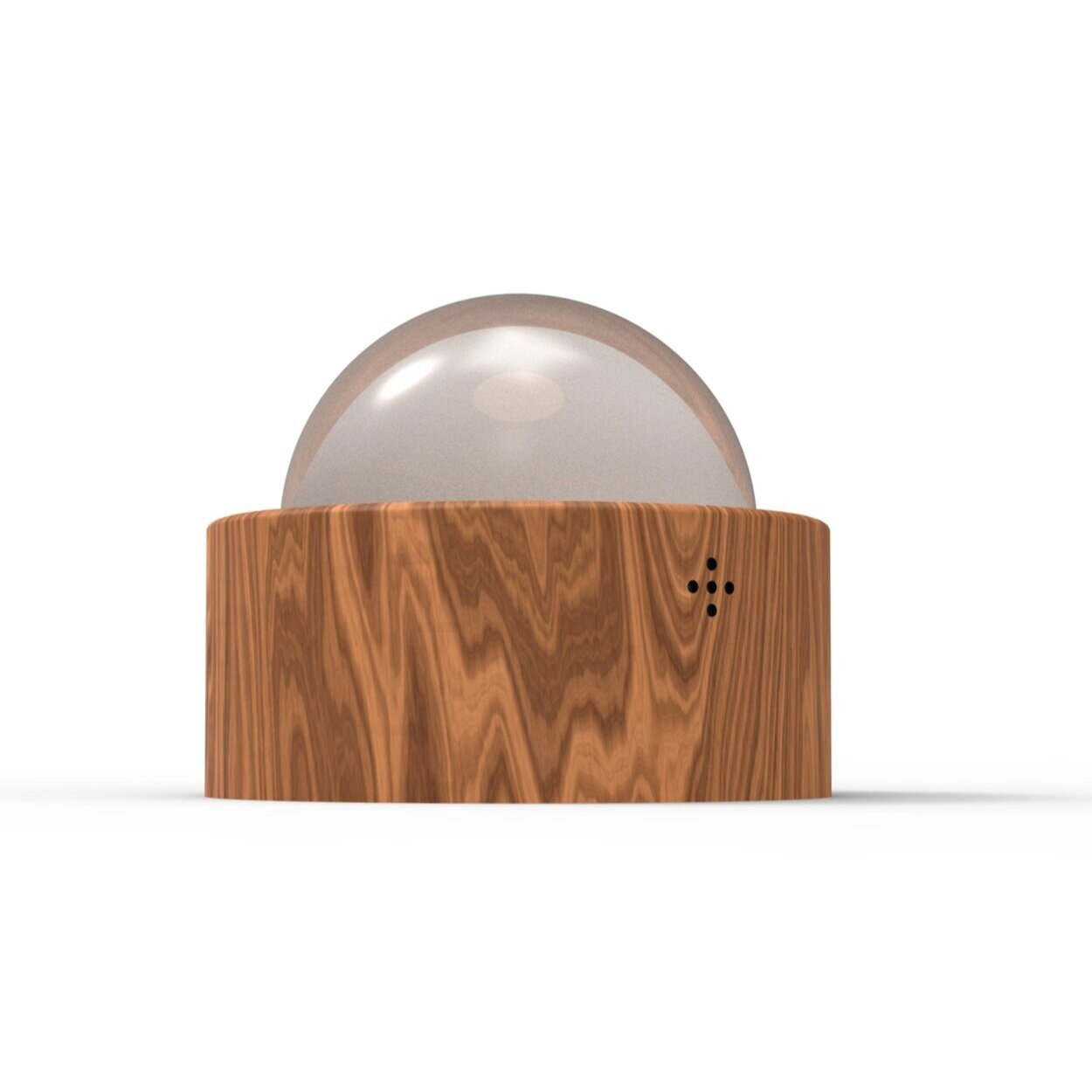UX DESIGN FOR SOCIAL CHANGE
Death is a very controversial topic that although inevitable is considered a taboo to discuss in our society. The goal was to create a physical product that pushes the social stigmas and helps start a conversation about death in a respectful way.
AWARDS WON
European Product Design Award, 2020 I Student Winner in Design for Society
Indigo Design Award, 2020 I Gold in Non-Professional Interactive Design
PROJECT OVERVIEW
The mourning/mourning-process of losing a loved one is one of the hardest things we face as humans. The social stigma that surrounds the concept of death is such that leads people into unhealthy coping strategies. Through conversational UI, Lumos helps the user cope through the feeling of loneliness, and though the five stages of grief in a healthy way.
Adobe Illustrator - Adobe Photoshop - Adobe Aftereffects - Overflow- Figma - Sketch - Principle - Rhino - Keyshot
OBJECTIVE
Our team worked on a ten-week design sprint on a topic of our choosing. We as a team wanted to tackle a problem that was unconventional and had a social taboo surrounding it; we chose the subject of death. After interviews, observational research, primary and secondary research, we decided on designing for those dealing with death and their experience throughout the grieving process.
TEAM
ROLE
Research and visual lead , created the interactive LUMOS digital onboarding platform, conversational screens, illustrations, and collaborated on generating the Conversation UI.
RESEARCH
OBSERVATION
To gain an understanding of our topic, we began our journey by visiting and observing physical spaces that signify death. The gained insights from their locations, meaning, significance, treatment, and use. We also noted the behavior of those people in them. The visits provided us with a better understanding of the correlations between the spaces; how people both discuss, understand, and digest the concept of dying. We found that although the view around death is individualistic and varies between person to person, there are certain key moments that everyone generally goes though. 5 stages of grief — Denial, anger, bargaining, depression and acceptance.
SECONDARY RESEARCH
Throughout the ten week sprint, we conducted various forms of secondary research.
We looked into buzz reports, pop cuture, religious scriptures, etc.
We wanted to analyze and see how/what people associate with the topic of death. We utilized various resources to understand the project form all angels to gain better and well-rounded insights.
We were also able to understand the different stages of grief a little better through our research.
EXPERT INTERVIEWS
To gain further gain a broader understanding of the complexity and synthesize our data, we conducted a series of interviews with various individuals who we believed to be experts in the topic of death — Specialized medical professionals, researchers, religious figures and support group leaders.
Though drawing correlations between our insights, we leaned that death and the process of dealing with the loss of a loved one is a profoundly personal experience that differs from person to person. These interviews provided to be the pillars and backbone of our research as we began to realize that we should not create a generalized solution.
PRIMARY USER INTERVIEWS
With a better understanding of humans regarding why they morn, how they morn, and their grieving process, we decided to gain a better understanding of emotions connected to the topic at a personal level. We conducted a series of interviews with people who have recently lost someone or are about to lose someone aiming to gain better insights regarding their individual experience and how they were and are dealing with it.



PERSONAS
The interviews helped us understand our user and generate personas. Their pains and gains helped voice our affinitization process and frame solutions.
“The anger was contagious”
“world become meaningless and overwhelming.”
“I was so busy trying to take care of everything I did not give time to myself for grieving”
USER JOURNEY
AFFINITIZATION
We synthesis our insights after collecting all our data and creating our personas. With agile methodologies, we began the process by grouping our initial insights into categories.
After we had clustered the stick notes in groups and categories we further condensed them in to
OPPORTUNITY SPACE
After conclusive research, we determined how we could create something that helped break the social stigmas and issues surrounding the concept of death: something that is not generic but shapes and the user's needs.
PROBLEM
The grieving process is often not talked about and gone through alone.
GOAL
To create a companion that helps people in grieving talk about what they are going through through CUI and mourn in a healthy manner.
SOLUTION
Losing a loved one can be one of the hardest things to go through in life. Talking through the pain of a loss is effective in getting through grieving. The grieving process is often not spoken of and done in an unhealthy way. Lumos is a companion to aid people through their grieving. The Conversational UI will guide the user through the five stages of grief in a healthy way while discouraging unhealthy vices. Lumos will reassure the user that what they are feeling is normal and they should get their emotions out. The grieving process will be without judgement and no longer be suffered through alone.
Lumos has built-in features that understand the stages one though by picking up verbal cues and through your interaction with the smart ball. The smart ball collects data regarding your communications and insinuates what stage of grief the user is at — Lumos senses when the user has reached the 5th stage of acceptance. Lumos then deletes the user's data from its file and wireframe to prevent the user from getting too attached.


























